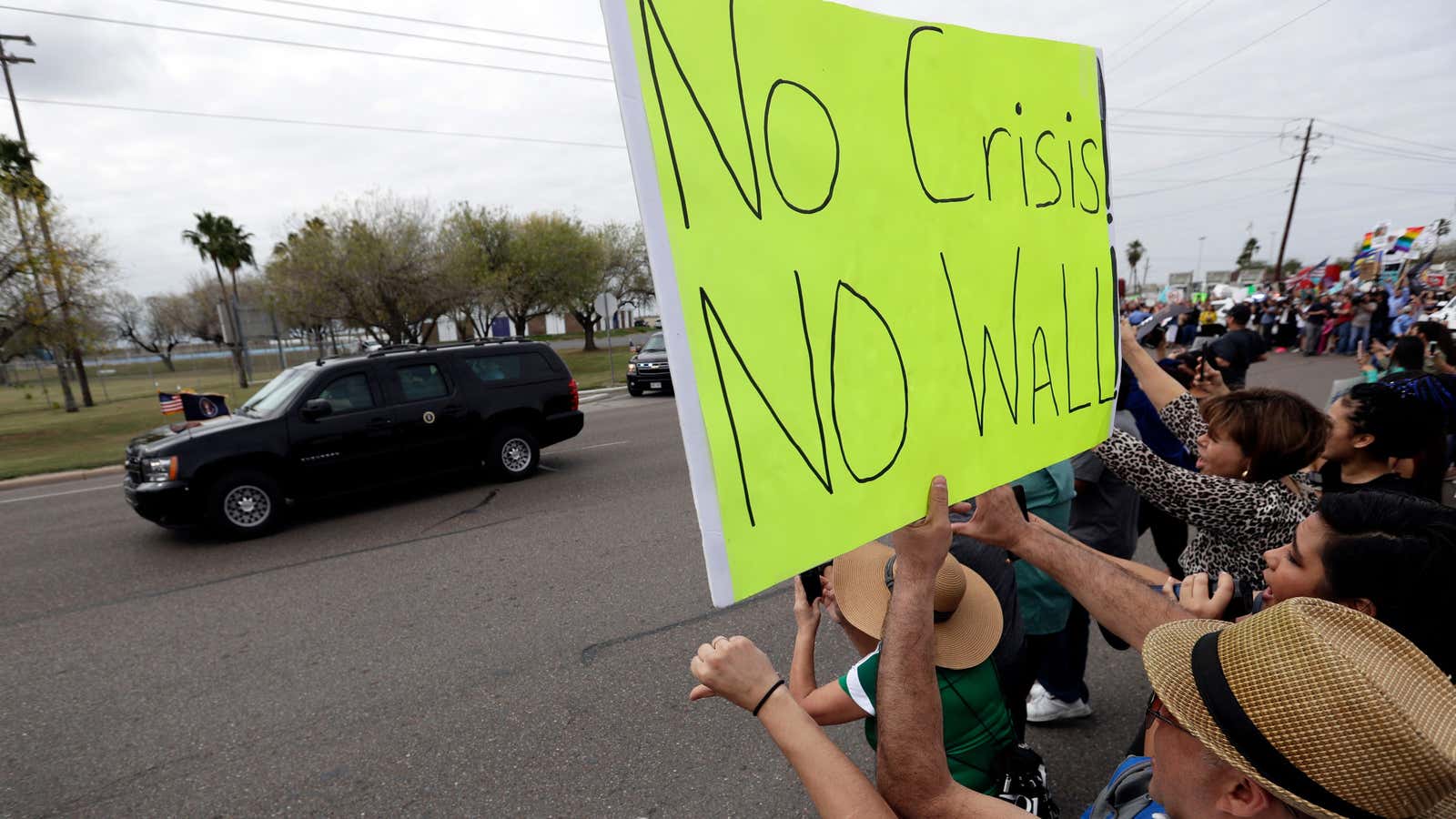Donald Trump says there’s a crisis at the US-Mexico border that requires erecting a wall between the two countries. The data suggest otherwise.
More than 60% of undocumented immigrants who arrived in the US in 2016 (the latest data available) overstayed their visas, not crossed the border illegally, according to a new report by Center for Migration Studies (CMS).
The number of immigrants living in the US illegally has also shrunk, the New York-based think tank found: to 10.6 million in 2017 from 11.7 million in 2010.
The data is yet another argument against Trump’s proposed wall, which sparked the current US government shutdown, now in its 27th day. Trump won’t sign a spending bill that doesn’t contain funds to build it; Democrats are refusing to provide it.
A physical barrier would do nothing to block the 320,000 immigrants who overstayed their visa in 2016, according to the report. Only 190,000 entered without inspection, by crossing a border illegally.
The new figures are part of a longer trend. Visa overstays significantly exceeded illegal border crossings from 2010 to 2016, the period CMS looked at. Their analysis is based on government statistics.
The situation calls for another approach: Instead of focusing on stopping illegal crossings, extra resources should be routed to the State Department, which issues visas, writes CMS.
Fewer Mexican immigrants
The places where undocumented immigrants are coming from have also changed. Though undocumented immigrants from Mexico remain by far the largest group, the drop in their numbers has been larger. CMS estimates there were 5.4 million Mexicans living in the US without authorization in 2017, down from 6.6 million in 2010.
Fewer Mexicans have been coming to the US after the 2007-2009 recession dried up job opportunities. The US’s stepped-up border enforcement and Mexico’s declining fertility rate have also played a role in the reduction.
Changes in the number of immigrants from other countries provide hints of other drivers of illegal immigration. Undocumented Venezuelan immigrants, for instance, went from 65,000 in 2010 to 145,000 in 2017—a 123% jump that reflects the country’s dire political and economical conditions, which have led many to flee. Meanwhile, the populations of undocumented immigrants from countries whose political and economic situation has improved—such as Korea and the Philippines—became smaller.
Overall, the data show that, contrary to the White House’s messaging, the US’s illegal immigration problem is shrinking, not growing.
